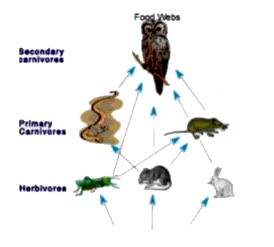A
B
C
D
Text Solution
Verified by Experts
The correct Answer is:
|
Topper's Solved these Questions
NEW CHAPTERS AND QUESTIONS BASED ON LATEST TYPOLOGIES INTRODUCED BY CBSE FOR 2021-22 EXAMINATION
OSWAL PUBLICATION|Exercise SOURCES OF ENERGY (SELF ASSESSMENT - 1 ) (OBJECTIVE TYPE QUESTIONS) (A. Multiple Choice Questions)|3 VideosView PlaylistNEW CHAPTERS AND QUESTIONS BASED ON LATEST TYPOLOGIES INTRODUCED BY CBSE FOR 2021-22 EXAMINATION
OSWAL PUBLICATION|Exercise SOURCES OF ENERGY (SELF ASSESSMENT- 1) (OBJECTIVE TYPE QUESTIONS) (B. Assertion and Reason Type Questions )|2 VideosView PlaylistNEW CHAPTERS AND QUESTIONS BASED ON LATEST TYPOLOGIES INTRODUCED BY CBSE FOR 2021-22 EXAMINATION
OSWAL PUBLICATION|Exercise HEREDITY BOARD CORNER (Short Answer Type Questions )|8 VideosView PlaylistMANAGEMENT OF NATURAL RESOURCES
OSWAL PUBLICATION|Exercise CASE-BASED MCQs|15 VideosView PlaylistNTSE 2019 - 20
OSWAL PUBLICATION|Exercise (BIOLOGY) WHY DO WE FALL ILL (STAGE - 1)|2 VideosView Playlist
Similar Questions
Explore conceptually related problems
Knowledge Check
A
B
C
D
Submit
A
B
C
D
Submit
A
B
C
D
Submit
Similar Questions
Explore conceptually related problems
OSWAL PUBLICATION-NEW CHAPTERS AND QUESTIONS BASED ON LATEST TYPOLOGIES INTRODUCED BY CBSE FOR 2021-22 EXAMINATION -OUR ENVIRONMENT (VISUAL CASE-BASED QUESTIONS )
- Food chains are very important for the survival of most species ...
03:32
|
Playing Now - Food chains are very important for the survival of most species ...
02:40
|
Play - Food chains are very important for the survival of most species T...
03:22
|
Play - Food chains are very important survival of most species. Matter a...
02:49
|
Play - Which of the following limits the number of trophic levels in a food c...
03:55
|
Play - Observe the food web and answer the questions given below: The m...
02:02
|
Play - Observe the food web and answer the questions given below - Whi...
03:00
|
Play - Observe the food web and answer the questions given below: The g...
03:17
|
Play - Observe the food web and answer the questions given below - Wh...
02:34
|
Play - Observe the food web and answer the questions given below - In...
02:39
|
Play - Food chains are very important for the survival of most species. When ...
04:17
|
Play - Food chains are very important for the survival of most species. When ...
05:29
|
Play - Food chains are very important for the survival of most species. When ...
04:49
|
Play - Food chains are very important for the survival of most species. When ...
05:20
|
Play - Food chains are very important for the survival of most species. When ...
05:03
|
Play - Biosphere is a global ecosystem composed of living organisms and abiot...
04:12
|
Play - Biosphere is a global ecosystem composed of living organisms and abiot...
04:28
|
Play - Biosphere is a global ecosystem composed of living organisms and abiot...
04:25
|
Play - Biosphere is a global ecosystem composed of living organisms and abiot...
05:23
|
Play - Biosphere is a global ecosystem composed of living organisms and abiot...
04:33
|
Play
